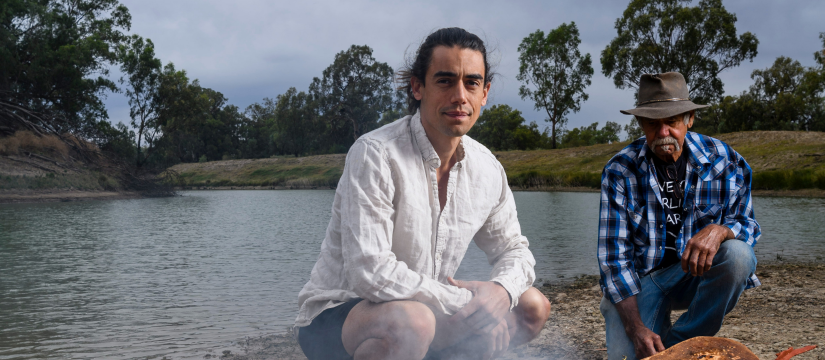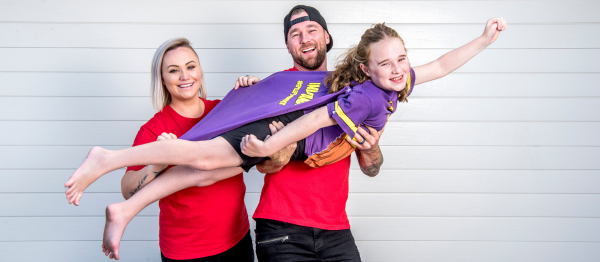
Creating a cultural legacy - Wesley Shaw
Last summer Wesley Shaw, producer of Art Gallery of NSW’s Aboriginal and Torres Strait Islander art programs, helped students from Wilcannia's central school, local artists and elders undertake a very special cultural project. Their brief was to source, shape and design a traditional Barkandji canoe by hand, using only Indigenous engineering methods passed down through the generations.
To the Barkandji people of the Wilcania region in NSW, the Baarka river is their ‘mother’ and lifeblood. Also known as the Darling River, the Baarka has long provided First Nations people with fish, food and medicine, wood and reeds to make cultural artefacts and, along its banks, the red river gum used to build canoes.
Traditional methods almost lost to time
Bark canoes were previously used by Indigenous families who lived along the rivers of north-western NSW, for transport, fishing and collecting food. The process of making a canoe required careful selection of a single piece of bark from the right ‘canoe tree’, then shaped using Indigenous engineering methods and finished with traditional fine art.
While these canoes were commonplace 70 years ago, today only a few local elders know how to shape the bark using struts to stop it from curling into a tight ball. It’s a process that takes time, effort and practice.
With no modern references, the project relied heavily on the recall of the two Barkanji elders who remembered seeing anyone make a canoe, one of them local artist William (Uncle Badger) Bates. While sharing their knowledge and their families’ stories with the younger participants, the group spent days together on the banks of the Baarka searching for the perfect canoe tree.
Once found, the team worked closely together to meticulously remove the chosen piece of bark in one piece, then set to work on building their canoe. Working alongside the group, Wesley was impressed by the concentration and commitment given by students and the hard work they put in, often sanding tirelessly for hours a day.
Launch a success for community pride
Once complete, Wesley and his team gathered on the banks of the river along with members of the community to launch the tiny, beautifully polished Baarka Canoe. While the canoe didn’t exactly succeed as a passenger vessel (sadly, it took on water and sank even with a tiny student on board), the overall achievement buoyed the group’s spirits as they remembered generations before them on the river, with a sense of pride among those who contributed. "At least it floated," said Uncle Badger.
Reflecting on the importance of reviving these important cultural practices, Wesley said
the AGNSW is committed to seeing the legacy of these projects firmly in place before moving on, ensuring they not only survive, but thrive. "Holding practices connected to the river empowers the students," he said.
Today the survival of this practice looks to be in safe hands, with some of the Wilcannia students now honing their skills as canoe makers by working with other students in Menindee and Bourke. One student, Shanaha, said she loved learning how to make a canoe, and the project had inspired her to learn more about art, finish her high school studies and continue to university.



